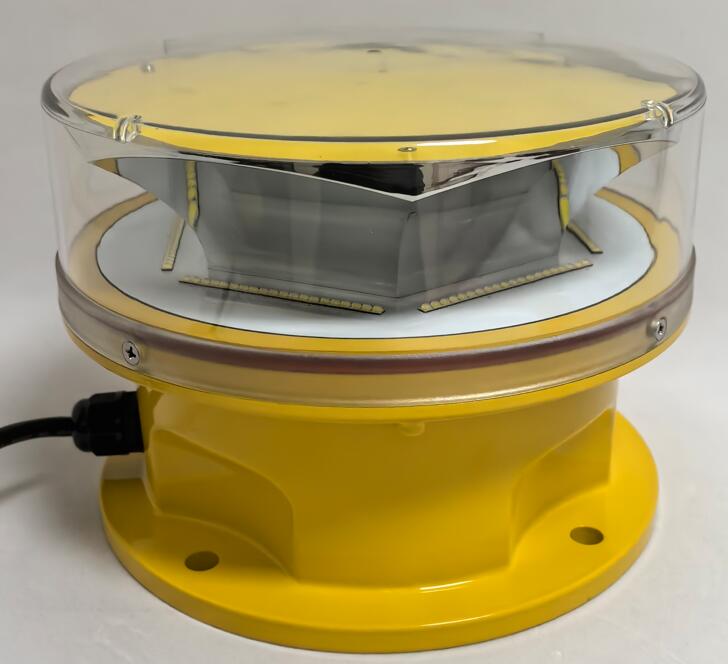Aviation Lamp for Tower: Essential Safety Solutions for Tall Structures
The rapid expansion of urban infrastructure and renewable energy projects has led to an increasing number of tall structures dotting the skyline. To ensure aviation safety, aviation lamps for towers serve as critical visual markers, alerting pilots to potential obstacles. These specialized lights are designed to meet stringent regulatory requirements while providing reliable, long-lasting performance in harsh environmental conditions.
This article explores the importance, types, and technological advancements of aviation lamps for towers, highlighting their role in modern airspace safety.

Why Aviation Lamps for Towers Are Crucial
Aviation lamps for towers are mandated by aviation authorities worldwide to prevent collisions between aircraft and tall structures. Their primary functions include:
Enhancing Visibility: Ensuring towers are visible to pilots during both day and night operations.
| aviation lamp for tower price |
Regulatory Compliance: Meeting FAA (Federal Aviation Administration), ICAO (International Civil Aviation Organization), and local aviation authority standards.
Preventing Accidents: Reducing the risk of mid-air collisions with communication towers, wind turbines, and skyscrapers.
Without proper aviation lighting, tall structures pose significant hazards to low-flying aircraft, especially in poor weather conditions.
Types of Aviation Lamps for Towers
Different types of aviation lamps are used depending on the structure’s height and location:
1. Low-Intensity Aviation Lamps (L-810)
Designed for structures under 45 meters (148 feet).
Steady-burning red lights for nighttime visibility.
Commonly used on small communication towers and construction cranes.
2. Medium-Intensity Aviation Lamps (L-864, L-865)
Suitable for structures between 45 and 150 meters (492 feet).
Red or white flashing lights for enhanced visibility.
Often installed on telecommunication towers and mid-rise buildings.
3. High-Intensity Aviation Lamps (L-856, L-857)
Required for structures exceeding 150 meters.
Bright white strobes visible from long distances.
Used on skyscrapers, tall chimneys, and offshore platforms.
4. Dual Lighting Systems
Combine steady red lights with white strobes for optimal visibility in all conditions.
Adjust automatically based on ambient light levels.
Key Features of Modern Aviation Lamps for Towers
Advancements in lighting technology have significantly improved the performance of aviation lamps for towers:
1. LED Technology
Energy Efficiency: Consumes up to 80% less power than traditional incandescent lamps.
Long Lifespan: Lasts 50,000+ hours, reducing maintenance costs.
Durability: Resistant to vibrations, extreme temperatures, and moisture.
2. Smart Monitoring & Control
Remote Diagnostics: Real-time monitoring of lamp performance.
Automated Alerts: Notifies maintenance teams of failures.
Cloud-Based Compliance Tracking: Ensures adherence to aviation regulations.
3. Solar-Powered Solutions
Ideal for remote or off-grid locations where electrical infrastructure is unavailable.
Environmentally friendly with zero operational emissions.
Regulatory Compliance and Installation Best Practices
To ensure effectiveness, aviation lamps for towers must comply with strict standards:
1. FAA & ICAO Regulations
FAA AC 70/7460-1L (U.S. standards).
ICAO Annex 14 (international standards).
Local Aviation Authority Approvals (country-specific requirements).
2. Proper Installation Guidelines
Mounting Height: Placed at the highest point of the structure.
Spacing & Coverage: Ensuring 360-degree visibility.
Weather Resistance: Must withstand high winds, rain, and extreme temperatures.
Future Trends in Aviation Lighting
The aviation lamp for tower industry is evolving with new innovations:
1. Aircraft Detection Lighting Systems (ADLS)
Uses radar or infrared sensors to activate lights only when aircraft are nearby.
Reduces light pollution and energy consumption.
2. IoT-Enabled Smart Lighting
Predictive Maintenance: AI-driven analytics to prevent failures.
Integration with Air Traffic Systems: Synchronizes with flight paths for optimized visibility.
3. Advanced Materials & Design
Self-Cleaning Coatings: Reduce maintenance needs.
Lightweight & Aerodynamic Housings: Minimize wind resistance.
Aviation lamps for towers are indispensable for maintaining safe airspace in an increasingly vertical world. With advancements in LED technology, smart monitoring, and solar power, these lighting solutions are becoming more efficient, reliable, and sustainable.
As urbanization and renewable energy projects continue to grow, the demand for high-performance aviation lighting will only increase. By embracing innovation, we can ensure safer skies for pilots and passengers alike while meeting global aviation safety standards.
